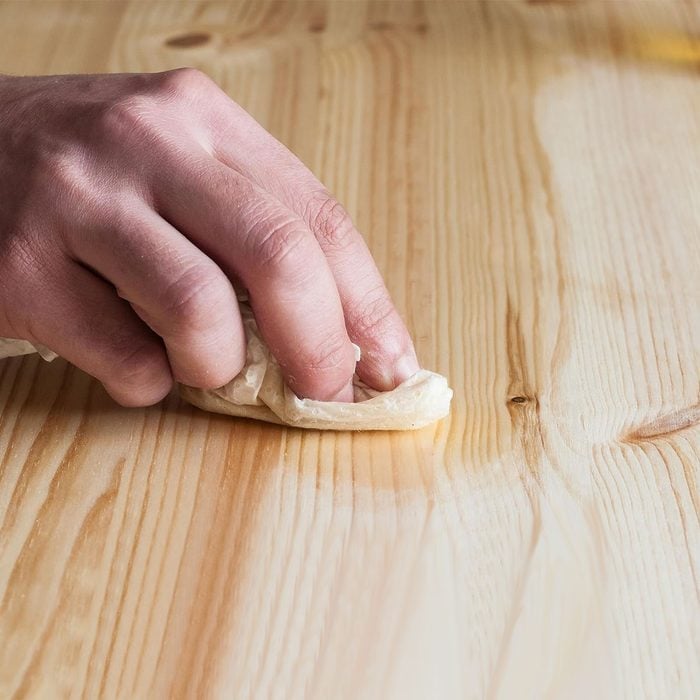Finish Wood With Oil: How To Choose the Right One
Updated: Aug. 30, 2023

Most wood oils are blends of tung and linseed oil. Formulations differ by brand, and the best choice is usually the one with the best reviews.
Our editors and experts handpick every product we feature. We may earn a commission from your purchases.
The practice of wood finishing predates the Christian era. Since the late 19th century, it has been dominated by synthetic materials like nitrocellulose lacquer and polyurethane. These do offer great wood protection but are essentially plastics. No woodworker who truly appreciates wood’s natural beauty wants to wrap it in plastic.
For anyone seeking to avoid plastic finishes, penetrating wood oil is the way to go. In the years I spent doing furniture finishing, my favorite was two coats of Danish oil, followed by a coat of furniture wax and a good buffing.
Danish oil isn’t necessarily a pure wood oil because it sometimes contains varnish (more on that later). But it’s durable, easy to maintain and looks great.
Because wood oil sinks into the grain, it won’t ever peel or chip away. It does wear out eventually, but it’s simple to restore. Just wipe off any existing wax with a solvent like mineral spirits, sand the wood and apply a fresh coat of oil. You can also use wood oil on outdoor furniture. But unless it’s heavily pigmented, it won’t stop the wood from fading in the sun.
On This Page
What Is Wood Oil?
Wood oil is a kind of finish that dries and hardens in the grain, making it key to protecting wood furniture. Non-hardening types like olive and mineral oil are sometimes used on cutting boards and chopping blocks because they’re food-safe, but you wouldn’t want to use them on furniture.
Wood oils harden when they react with oxygen to form cross-linked polymers, and only a few sources of such oils exist. One is the nut from the tung tree (Vernicia fordii), which grows in China and parts of Southeast Asia. Another is the ripe seed of the flax plant (Linum usitatissimum), which grows all around the world.
Pressed flax oil is edible as flaxseed oil when it’s raw. But after it has been boiled, it turns into inedible linseed oil, a hardening oil. Tung oil is the harder of the two and the one most often used on its own, while linseed oil is a common base for paints and varnishes.
Many wood oil formulations combine these two with a solvent like mineral spirits (and sometimes varnish). Formulations that include pigments can double as wood stains.
What Are the Different Types of Wood Oils?
You’ll come across many brands and formulations when shopping for wood oil, but all are variations of four types.
Tung oil
In its pure form, tung oil is a popular choice among woodworkers because it sinks deep into wood, completely sealing out moisture. It’s easy to apply, doesn’t turn yellow over time and looks spectacular. But it’s expensive, emits a strong order and doesn’t last long in storage.
Boiled linseed oil
Pure boiled linseed oil, like tung oil, is non-toxic and easy to apply. But a linseed oil finish isn’t quite as hard and needs frequent maintenance. Moreover, the finish is vulnerable to UV radiation, will turn yellow over time and supports mildew growth.
Teak oil
Despite the name, teak oil doesn’t come from teak wood. It’s a combination of tung and linseed oils, varnish and a solvent, and the actual formula differs by manufacturer.
Because it includes varnish, it isn’t a true oil; some finishers call it a “wiping varnish.” It has sun blocking properties, so it’s a popular choice for outdoor furniture made from teak wood.
Danish oil
Another wiping varnish, Danish oil also combines tung and linseed oil, varnish and a solvent. It’s another product whose composition varies by manufacturer and often contains pigments. It gets its name because it makes furniture look like traditional Danish furniture. It’s intended for indoor use.
How to Know Which Wood Oil to Use?
Tung oil is a good choice for almost any finishing situation, but it’s expensive and time-consuming to apply properly. Most woodworkers opt for a faster-drying blend of oils that includes varnish for extra durability. Generally, you’d use Danish oil for interior woodwork and teak oil for outdoor woodwork.
Because formulations differ by brand, read customer reviews before purchasing a particular product. Even then, you can’t really tell if it will yield satisfactory results until you try it out.
Wood Oil Finish Application Tips
You can apply wood oil with a rag or a brush, going with the grain and wiping off excess with a clean rag after 10 to 20 minutes. You almost always need multiple coats. For best results, scuff-sand before applying a fresh coat.
The existing finish must be dry before you sand. If you use slow-drying pure tung oil, that can take the better part of a day, stretching the entire finishing process over two to three days. When you’re in a hurry, blended oils dry faster and are a more efficient choice, although not necessarily a better-looking one.
